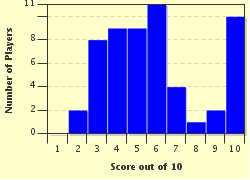Quiz Answer Key and Fun Facts
1. With its long prehensile tail and reddish-orange color, this cave dweller is uniquely covered in black spots. What is it called?
2. This tiny creature, a mere one-fifth of an inch long, can be found in dark streams deep within caves. It has no stomach, respiratory or circulatory system. Name this simple cave dweller.
3. Commonly found in caves all over the world, which upside-down-hanging mammal uses echolocation to hunt for food?
4. This crustacean lives its entire life in a cave. Its antennae are longer than other species of its kind. In appearance it looks like a small white lobster. Can you identify it?
5. This industrious cave dweller is a collector. Some might even say hoarder. It builds a dome-shaped nest in the corner of a cave, using sticks and leaves to cover the nest. Which cave dweller is it?
6. Limestone caves are the most likely place to find this insect and there are thousands of them in big caves. Which insect is it?
7. First discovered in the 18th century in caves of Slovenia and Croatia, this blind salamander was once thought to be a baby dragon. What is it called?
8. There are hundreds of this species around the world. Since they breathe with gills they need to live in water or the dampness of caves. They are known as what?
9. Cave life is an ecological system unto itself. The name of which species of cave dweller means "thousand legs?"
10. Three of the following choices are not cave dwellers. Find the one that is.
Source: Author
nmerr
This quiz was reviewed by FunTrivia editor
guitargoddess before going online.
Any errors found in FunTrivia content are routinely corrected through our feedback system.


